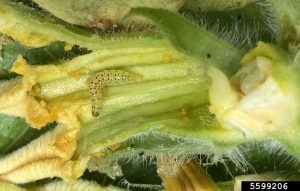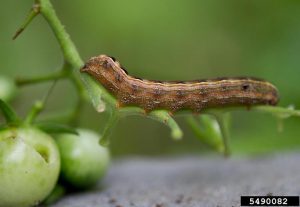Gardening in Florida can be incredibly rewarding and incredibly frustrating at the same time. If you are new to the region, you soon learn that gardening in the sunshine state can quickly become a full-time job. Our subtropical climate is perfect for growing an abundance of different vegetables, fruits, and herbs, but the challenges can sometimes be a bit overwhelming.
This is where we can help! Agents from UF/IFAS Extension Sarasota County have partnered to offer a weekly, 30-minute workshop on Zoom to help answer your gardening questions. The first 10 minutes offers an educational component relevant to the urban gardener. The remainder of the time is dedicated to question and answer – any question you have! The series runs through March 2021 with the exception of holidays. You must register for the series on Eventbrite to receive the link to the series. You only need to register once to get access to the entire series:
Every week, the agents will post a question from the webinar that we are sure will be helpful for our community gardeners at large.
This week’s Question of the Week:
I have a caterpillar that seems to like my squash. What is it and how do I get rid of it?
The caterpillars that have been invading your garden are most likely armyworms and pickleworms. These insects seem to love our garden plants as much as we do. The difference is that we love our plants for the offerings they give us whether it is fruit, vegetables, or tasty leaves. The caterpillars also love all the offerings – including the plant itself! Although they are called ‘worms’ they are actually caterpillars that will transition into moths. As soon as they hatch from the eggs, these young caterpillars will all feed in the same location and the damage is noticeable. Left unchecked, these insects can be extremely destructive in a short period of time.
Common caterpillars that eat squash and cucumbers:

Pickleworms: If you have ever sliced into a garden-fresh summer squash or cucumber and been surprised by a living caterpillar inside, you have likely found a pickleworm! Pickleworms’ favorite foods are cucumber, squash, zucchini, pumpkin, and cantaloupe. When plants are young, pickleworms eat their way through flowers, reducing the number of fruits each plant produces. As fruits begin to form, pickleworms eat their way into the interior of each fruit. Because these hungry caterpillars live inside the flowers and fruit, they can be particularly challenging to control.
Armyworms: There are many species of armyworms. The five most common species of armyworm that do damage to crops in Florida are beet armyworm, fall armyworm, southern armyworm, true armyworm and yellowstriped armyworm. Each of the five most common species of armyworms feeds on a wide variety of plants.
Pictures below (left to right): Beet, Fall, and Southern Armyworms

True armyworm generally prefer grasses and grains but when their populations are high, will also eat some vegetables including beans, cabbage, carrots, corn, celery, cucumbers, lettuce, onions, parsley, peas, peppers, radish, sweet potatoes, and watermelon. You might occasionally experience damage from true armyworms on your cucumbers and squash plants.

Yellowstriped armyworms eat a wide array of plants including beans, beets, cabbage, cantaloupe, carrots, corn, cucumbers, lettuce, onions, peas, potatoes, raspberries, sunflowers, sweet potatoes, tomatoes, turnips, and watermelon. Yellowstriped armyworms also eat many common species of weeds. When populations are high, you will experience damage on your cucumbers and squash plants.
How to control them:
Early detection is key to controlling these pickleworms and all varieties of armyworm. Young plants can be more susceptible to their feeding damage due to the small size of the plant. Older plants can overcome feeding damage if the insect is controlled. After planting, frequent monitoring/scouting should be done to find damaging pests when they are young and small. This will help in limiting plant damage and achieve greater success if a chemical application is necessary.
When you find the insect you can hand-pick them off the plant. This is an environmentally friendly way to getting rid of the insect. This method does not require the use of a chemical to help solve the problem. Sometimes this doesn’t work, but there are other ways to control the insect!
Many natural enemies such as parasitic wasps, flies, and generalist feeders attack the caterpillars, but the population may not be high enough to fully control the caterpillars. Biorational pesticides -chemical products derived from natural materials including animals, plants, bacteria, or minerals- can be used against pest insects and are relatively safe to use around natural enemies. If you are interested, you can read more on alternative pesticides at the UF/IFAS blog, Controlling Insects Naturally.
If all else fails, foliar applications of Bacillus thuringiensis (Bt), a bacterium specific to the caterpillar, is quite effective against caterpillars when caterpillars are small. Bt must be eaten by the insect so make sure to get good spray coverage on the plant. Since Bt products are specific to the insect pest, be sure to read the label to confirm the insect you are targeting is listed on the label.
Although Bt is a biorational pesticide, caution should always be used when applying this or any other biorational or conventional pesticide. Always read the label. Remember that pesticides are just one component of an integrated pest management program. Chemical controls should be used only if necessary and only after all other control measures have been implemented. Pesticides should never be the first line of defense or relied on as the sole source of control.
Factsheets and resources for gardening in Florida:
UF/IFAS EDIS has an array of informative publications on gardening and integrated pest management that can be found at the links below:
- Natural Products for Managing Landscape and Garden Pests in Florida:
- Organic Vegetable Gardening in Florida:
- Pest Management Topics
The Edible Gardening Series and blog series is a partnership between the following UF/IFAS agents and Sarasota County staff:
- Sarah Bostick, Sustainable Agriculture Agent
- Carol Wyatt-Evens, Chemicals in the Environment Agent
- Mindy Hanak, Community & School Gardens Educator
- Kevin O’Horan, Communications Associate
Photo Credits:
- Southern Armyworm (Spodoptera eridania) (Stoll) – Central Science Laboratory, Harpenden , British Crown, Bugwood.org
- True Armyworm (Mythimna unipuncta) (Haworth) – Roger Schmidt, University of Wisconsin-Madison, Bugwood.org
- Yellowstriped Armyworm (Spodoptera ornithogalli) (Guenee) – David Cappaert, Bugwood.org
- Fall Armyworm (Spodoptera frugiperda) (J.E. Smith) – Phil Sloderbeck, Kansas State University, Bugwood.org
- Beet Armyworm (Spodoptera exigua) (Hubner) – John Capinera, University of Florida, Bugwood.org
- Pickleworm (Diaphania nitidalis) (Stoll) – Brantlee Spakes Richter, University of Florida, Bugwood.org
 0
0



